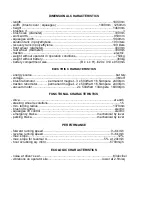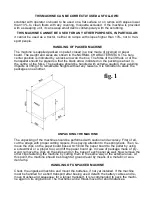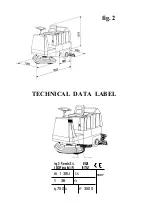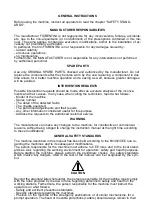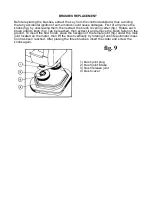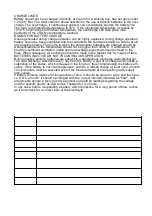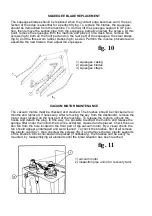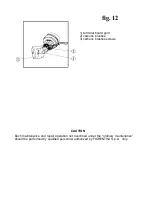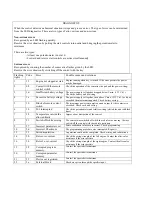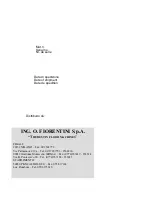
INSTALLING THE BATTERY CHARGER
Install the battery charger in a ventilated and dry place, far from heat sources and corrosive
environments. Make sure that the voltages are correct (see the data plate located on the
battery charger). Protect the mains with a delayed switch or with a load fuse higher than
the max. power consumption of the battery charger. Observe the polarity of the battery soc-
ket (black cables are identified by s and -).
CHOOSING THE DETERGENT SOLUTION
For a good cleaning of the floor, it is important to choose the proper detergent solution. If
necessary, ask the supplier or a competent person for the proper solution. Keep in mind that
a too strong chemical agent can compromise the long life of each machine. It is neces- sary
to use a low-sudsing detergent solution, or an antifoaming additive, in order not to da- mage
the vacuum motor. If it is impossible to get these products, use some vinegar to
avoid foam, pouring 50cc of it in the recovery tank before scrubbing.
STARTING AND PREPARING THE MACHINE
If the scrubber is connected to the battery charger (having finished the charge operation),
detach the battery charger plug from the socket (located on the machine) coming from the
battery (fig.). Then, connect the plug of the machine to this latter (fig.). Close the battery co-
ver again. The machine should be operated by turning the master key switch (fig.). Then,
proceed with the water loading described under the paragraph (par.). Perform the scrub- bing
once the work place has been reached.
SCRUBBING
The scrubbing operation is very delicate, as the operator
’s experience must be used to deci-
de upon the brush type, the requirement of a possible double scrubbing operation, the right
cleanser choice and the right machine adjustments: if only one of these factors is inadequa-
te, the scrubbing operation can give very poor results. If the floor is very dirty or difficult to be
cleaned, a double scrubbing operation is recommended. In this first phase, the squee- gee
must be lifted and the brushes must be in working position. Start the brushes and pass the
machine over a surface of some tenth sq. mt. Let the detergent solution on the floor to
dissolve the dirt, then pass the machine again. For this second machine passage, lower
the brushes and bring the squeegee in contact with the floor. Look at the floor after this se-
cond passage and decide if the scrubbing operation was enough or if an additional opera-
tion is required. To perform the scrubbing procedure, turn the switch to pos. 2 (fig.) and keep
it there till you hear the end-of-stroke croaking noise. The motor brushes will go auto-
matically on and the brushes wil be in contact with the floor, with the right pressure too. Now
operate tmmediately the lever to apply the detergent water, and adjust it accordingly. Put the
run selector (fig.) in its forward position and press the pedal (fig.) so that the machi-
ne moves forward and starts scrubbing. The water dosage must be adjusted to get the who-
le suface completely wet after the brush passage, but without any excess, that could gene-
rate splashes, stream or flows out of the squeegee. If no double scrubbing will be effected,
lower the squeegee immediately after having put to forward the run selector. The squeegee is
lowered through the switch set to pos. 1 (firm). The suction motors go automatically on during
the squeegee lowering and go off when it is lifted back. At the end of the scrubbing and
drying operation, close water through its lever (fig.), then set the switch (fig.) to pos. 1 till you
hear the end-of-stroke noise, to lift the brushes. Finally, set the switch (fig.) to pos. 0 to lift
the squeegee. Note that, during backwards motion, the squeegee is automatically lif- ted.
WATER FILLING AND DISCHARGE, TANK CLEANING
Before every scrubbing operation, open the door (fig.) and fill the solution tank with the right
quantity of water and cleanser. The tank is made of polyethilene, resistant to all acid and
basic solutions and to all dissolvents found on the market. At the end of the scrubbing
operation, discharge the dirty water from the recovery tank by means of the hose (fig.). The
recovery tank is made of polyethilene too. Accurately clean the recovery tank at least once
per week.
Summary of Contents for I38UE
Page 9: ......


